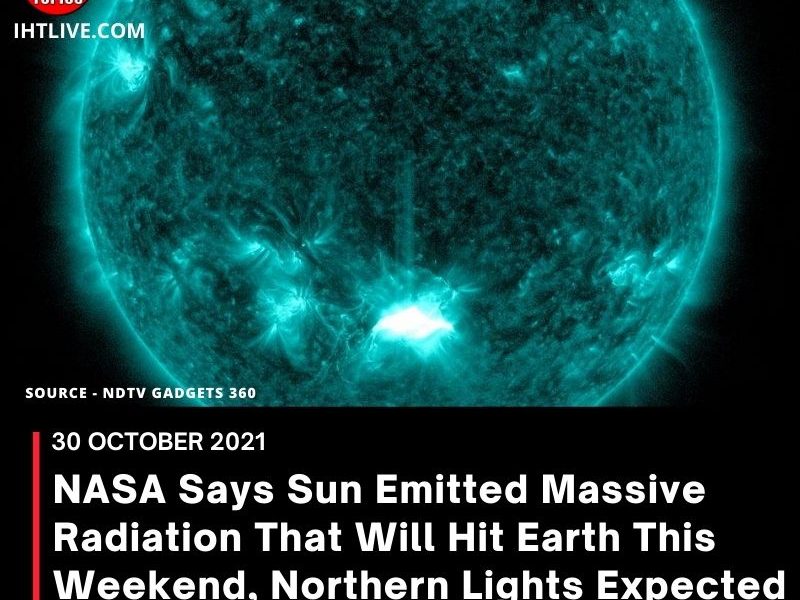According to NASA, large-scale solar flares may produce dazzling northern lights in parts of the United States on Sunday. NASA said that a solar storm broke out on October 28 and sent a large number of charged particles clouds, which should reach Earth on Halloween (Sunday, October 31). When these particles hit the earth’s atmosphere, they amplify the regular northern lights. Although the solar fare carries harmful radiation from the sun, this radiation does not pass through the earth’s atmosphere and have a physical impact on humans on the ground.
However, some strong atmospheres can interfere with GPS and communication signal propagation. In a blog post, NASA classified solar storms as powerful X1-class flares. Class X represents the strongest flare. Numbers provide strength. For example, X2 is twice as strong as X1. NASA also released images of the October 28 event captured by the Solar Dynamics Observatory, which constantly observes the sun.
This image shows the bright flashes of the lower center of the sun and the extreme ultraviolet light in the flares represented by blue-green in the image. Due to the strong solar wind, this is the second strongest solar wind this year, so from the south to New York, Idaho, Illinois, Oregon, Maryland and Nevada, you should be able to see the resulting northern lights. “For people in the mid-latitudes of the United States, this may be a wonderful performance of the aurora,” NASA Deputy Director C Alex Young told space.com.
Yang said that solar flares are accompanied by a coronal mass ejection (CME), which is a huge burst of radiation. “The current estimate for CME is that it will reach Earth on October 31st,” Young added. Seeing the aurora can be difficult, especially if you live in a big city full of street lights and other light pollution. For a better experience, try to get the lights far away from the city and look for the darkest sky.
News Source : Gadgets 360

